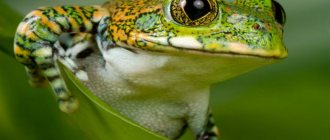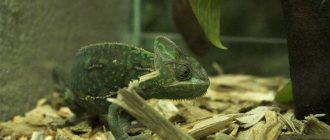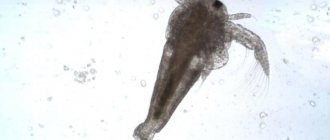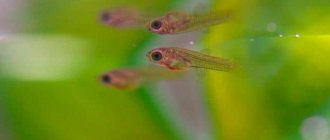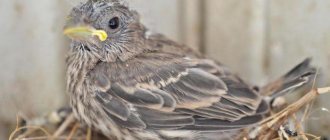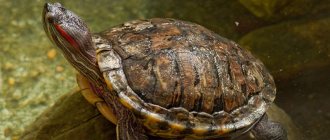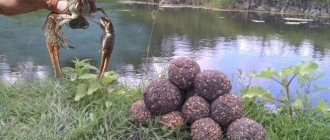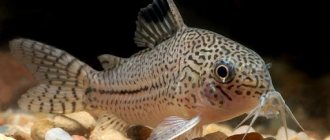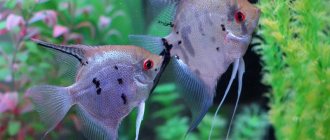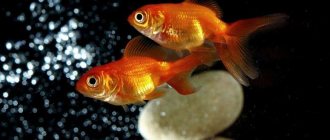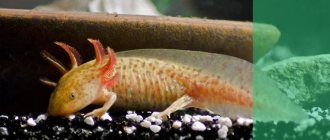Hello, dear aquarists! In articles on my Aquariumist blog, I have already written more than once about live food, in particular about daphnia. I think it wouldn’t be amiss to highlight a page about breeding Daphnia moina at home.
This will be necessary for those who purchase live crustaceans for further feeding of fry and small aquarium fish.
Breeding and keeping daphnia alive is not difficult at all. This will require containers and preferably more than one. What quantity and how much you yourself will understand during the breeding process. Everything will depend on the number of fish and their appetite. How many times will you feed your pets: once a week or more often.
You can buy live Daphnia Moina in St. Petersburg from me. If you want to purchase crustaceans for breeding, write by email or call the phone number listed on the “Contacts” page
To breed daphnia, it is convenient to use a 5-liter container of drinking water. Cut off the top and get a jar. Pour clean, settled water into the jar. On the Internet they write that it is from an aquarium. But I wouldn't do that. If there are nitrates in your aquarium, then this is not very good for daphnia. After some time it will pollute the water itself. I defend our St. Petersburg tap water. Sometimes there is not enough aquarium water. For example, I made a change, threw out the water, and then decided to start another jar. I don’t add water from the existing jars of daphnia, unless only a little. I release the crustaceans. It is advisable to run a large number. Then you will quickly notice the difference in the increase in the number of livestock. Of course, you can also use canisters with a cut top, other containers or glass aquariums.
Useful links on the Aquarien website:
Dosage of Sidex when fighting black beard, how much glutaraldehyde to pour?
How to grow daphnia at home
Daphnia crustaceans - features of breeding at home.
Tips for growing, feeding and collecting daphnia First, let's answer the question - where can I get a live culture of daphnia? In Western Europe and North America, everything is simple, crustaceans can be ordered online and the package will be delivered the next day right to your doorstep. In Eastern Europe and the CIS countries, such a service exists only in large cities and not in all of them. Residents of the province can use the services of pet stores as intermediaries, purchasing live crustaceans from them, or collecting them in nature with a simple net. In the summer, zooplankton lives in large quantities in almost any lake or pond. True, in the latter case, there is a high risk of catching unwanted guests, for example, hydras or any parasites, which in the future can migrate to the aquarium with fish.
Daphnia can be cultivated in almost any container (barrels, canisters, tanks, etc.). For ease of calculations, this article uses a 100-liter container. The water should be clean, the hydrochemical composition does not matter, the temperature should be 18–21°C. At higher temperatures, the reproduction process slows down, so you will have to find a cool place for the tank. Regular tap water will do. However, depending on the area, it may contain chlorine. It must be removed, for example, by leaving the water in an open container for a day. Additional aeration will not be superfluous. For those who breed daphnia for the first time, a transparent aquarium is recommended in order to better control the process of development of the crustacean culture, the amount of food, etc.
Appearance
Sex differences
Under favorable conditions, daphnia do not have males. Females give birth to their own kind. When conditions change, some females give birth to males.
Female and male individuals have some differences in external and internal structure:
- females are larger in size;
- on the head shield and outer cover of females there is a pattern of rhombuses and polygons, which is clearly visible when magnified;
- The first and second pairs of legs in males have hook-shaped projections that allow them to cling to females during mating.
Subspecies
About 150 species of these crustaceans live in natural conditions . Very often, several dozen species of crustaceans live in one body of water.
Daphnia magna
This variety is used as live food for aquarium fish due to its high nutritional value. The body length of the female is 3-5 mm, the male – no more than 2 mm. Newborns are microscopic in size. The main color of the outer cover is yellow or pinkish-orange. This species easily tolerates low temperatures. It is quite rare in nature, but in permanent habitats it is found in abundance. The lifespan of adult specimens is 3 months.
Daphnia pulex
The length of an adult female does not exceed 4 mm, a male – 1.5 mm. The color of the outer covers varies from light yellow to red. Externally, the crustaceans resemble Daphnia magna. The difference lies in their smaller size and life expectancy, which does not exceed one and a half months. The variety is characterized by incredible fertility. Females lay eggs every five days. Each clutch consists of 15 eggs.
What to feed:
There is no specialized food for daphnia as such. Various sources mention a wide variety of products from manure, yeast to finely chopped trout and bacon. However, most of them are not direct food for crustaceans, but serve as the basis for the development of bacteria and fungi, which daphnia already feed on. In the author’s subjective opinion, the optimal food is:
Spirulina and/or chlorella algae in powder form
— supplied to pet stores, widely available in online stores. For example, you can order on ebay or aliexpress.
Specialized microfeeds for freshwater shrimp larvae
— available in pet stores or on order from fish suppliers.
Dry baker's yeast and regular wheat flour
- sold in any grocery store.
Doug's mixture
- the crown of culinary creation for daphnia. Consists of 1 part soy flour, 3 parts wheat flour, 1 part ground peas, 3 parts baker's yeast, 1 part paprika, 2 parts spirulina and/or chlorella algae.
Home experiments have shown that Doug's mixture is most effective, but requires a lot of time and ingredients to prepare. Similar results are obtained by combining baker's yeast and chlorella powder in a 50/50 ratio - this mixture is prepared much faster and easier. If desired, you can add a little paprika (1/10 part), which colors the daphnia, and is subsequently absorbed by the fish’s body and enhances their color.
Reproduction
The crustaceans reproduce quickly and intensively. A chamber appears on the female’s back in which the brood hides. The chamber is covered with a shell, which protects the offspring from attacks. Reproduction occurs in summer. At a time, the female lays about 100 eggs, which she places in a feeding chamber. New females hatch from them and leave the chamber. After three to five days, the female lays new eggs. New females are able to reproduce within a week after emergence.
In autumn, the reproduction process slows down due to climate change. During this period, not only females, but also males emerge from eggs. Males perform the role of inseminator. Active reproduction continues every summer, decreasing in the fall. During her life, the female reproduces about 25-30 times.
How to feed
Daphnia can be fed in two ways. The first is based on water transparency. The second is based on the density of the crustacean culture in the aquarium.
Method one
Add the food mixture to the container with crustaceans and mix gently until the water becomes slightly cloudy. You should remember the amount of feed supplied. After a day, the water should become crystal clear. If this does not happen, then there was too much food. If the water clears faster, it means there is not enough food. This method requires experience and constant correlation of the amount of mixture supplied. Suitable for mature colonies only.
Method two
First you need to learn how to determine the number of daphnia per unit volume. In this case, one unit is 20 ml. Buy a regular 20 ml syringe at the pharmacy and leave only the flask. Attach it to a stick, for example, a bamboo sushi/roll stick, vertically with the tip down and seal it. You will get something like a scoop. With this scoop you need to scoop up water from different depths and count each time how many daphnia are caught in it. Then it remains to calculate the average value. Feed should be supplied based on the number of daphnia per unit volume - the same 20 ml. Use the table below as a guide to create your own. For example, if the average value is about 20 crustaceans per 20 ml in a 100-liter aquarium, then every day you need to stir 2 teaspoons (tsp) of the food mixture (without a slide). Be sure to observe the transparency of the water as mentioned in the first method. The proportions may need to be changed.
Table of the amount of feed supplied depending on the density of the Daphnia culture
| Daphnia density per 20 ml | Amount of feed per 100 liters | Amount of feed per 200 liters |
| 20+ | 2+ tsp/day | 4+ tsp/day |
| 12-20 | 2 tsp/day | 4 tsp/day |
| 5-11 | 3/4 tsp/day | 1-1/2 tsp/day |
| 1-4 | 1/4 tsp/day | 1/2 tsp/day |
| 0-1 | 1/8 tsp/day | 1/4 tsp/day |
In the first stages of growing daphnia, when their number is very small (they have just been brought in for breeding), it is easy to overfeed the crustaceans. Uneaten food quickly decomposes and pollutes the water, which can ultimately lead to the death of the entire colony. Therefore, food should be fed in limited quantities, a few pinches at a time.
Using the wrong container
You can use any containers for growing daphnia, but the best ones are wide and not tall. In such systems, the area of water that comes into contact with air is larger, and accordingly, gas exchange occurs more intensely. In low containers, food is eaten better and it is more convenient to control the crop.
Daphnia concentrates more near the surface, reacting to light. In shallow containers, the crustacean is distributed throughout the entire volume. In deep ones, only at the surface, 30-40 cm deep, respectively, the volume below 30 cm is not used effectively.
container for breeding daphnia
Maintenance of an aquarium/tank with daphnia
It is necessary to replace the water (at least 25% of the volume) with fresh water at the same temperature every 2-3 days. It is advisable to combine water replacement with cleaning the bottom, where various organic debris and dead crustaceans will settle. The water is drained using a siphon - often its role is played by an ordinary small-section hose (within 1 cm) with a tube at one end. It is convenient to move the tube along the bottom, sucking up debris. As with a regular aquarium, over time the walls will become covered with organic deposits. It can be easily removed with a scraper, and fallen particles can be removed with a siphon.
If you are only replacing the water, then it is advisable to put a fine mesh on the drain end of the siphon, on which several dozen daphnia will settle, inevitably ending up in the hose. The crustaceans caught in this way will become an addition to the fish’s diet.
Of no small importance, and maybe even decisive, is the presence of snails in the tank, a lot of snails. The same ones that are widely used in aquarium farming. They serve as excellent living cleaners and are also safe for daphnia. They eat leftover food and other organic matter, and their shells serve as a site for the development of colonies of nitrifying bacteria involved in the nitrogen cycle. Thanks to them, labor costs when maintaining an aquarium with crustaceans are significantly reduced and the risks of increasing the concentrations of nitrites and nitrates to dangerous levels are reduced.
Description
Daphnia are tiny crustaceans that spend most of their time in the aquatic environment. Planktonic crustaceans have two eyes and small antennae on their heads. Two antennas are located in the front, and two in the rear. Rear antennas are used for movement.
Daphnia crustaceans spend most of their life in water. They move sharply, spasmodically, repelled by their antennas. Some representatives move by crawling along the bottom. They can move along the walls of the tank, pushing off with their chest legs. The peculiarity of daphnia is that they multiply rapidly, quickly filling the tank.
Contents of Daphnia
A tank with daphnia is equipped with an aerator to enrich it with oxygen and mix the food throughout the entire volume.
Using a biological or any other filter is not effective; it will quickly suck in the food before the daphnia get to it. The result is malnutrition of the crustaceans and rapid clogging of the filter material. The only equipment that is used when growing daphnia is an aerator. You may also need a heater if the temperature does not reach 18 degrees. Aeration solves several problems: it enriches the water with oxygen and mixes it, ensuring uniform distribution of feed throughout the entire volume. The latter is very important for the normal nutrition of crustaceans, since food particles should not settle to the bottom, but should be constantly suspended.
If done correctly, within a few weeks the colony should reach a concentration of more than 10 daphnia per 20 ml, which means 100-150 grams (wet weight) per 100 liters per week. A smaller number will indicate a problem. In this case, carefully inspect the aquarium/tank for natural predators such as flatworms, hydras and others. Problems may be related to the conditions of detention; there are two main signs: crustaceans do not reproduce well or there is a high mortality rate. In the first case, it is probably a matter of temperature. But in the second, everything is much more complicated. You will need to check every component: the quality of the water (usually for the presence of chlorine), the composition of the feed and its distribution throughout the entire volume of water, how cleaning occurs, perhaps too much loss is due to the siphon, etc.
Danger to humans
Because of their association with insects, many people believe that Water Fleas bite. But they do not have the corresponding organs, which means that such bites are excluded. Daphnia can cause harm only by causing an allergic reaction in people predisposed to it. As they absorb food, they also accumulate dangerous pollen, the concentration of which increases in dried organisms.
According to statistics, crustaceans cause allergies in almost every fourth person. It manifests itself in the following symptoms:
- itchy skin rashes, like hives;
- dryness and congestion of the nasal sinuses, runny nose;
- frequent involuntary sneezing;
- allergic conjunctivitis with tearing;
- difficulty breathing due to bronchospasm;
- bronchial asthma.
To diagnose the condition, doctors analyze a skin test. In case of positive results, antihistamines are prescribed and contact with Daphnia is avoided.
When, in what quantities and with what to collect daphnia
The “harvest” can only be harvested when the concentration of crustaceans reaches 10–15 or more per 20 ml. At the same time, only large individuals should be caught so that small and medium-sized ones continue to grow and produce a new generation. As soon as the concentration reaches 10 or less crustaceans per 20 ml, fishing stops. Collection can be done the old fashioned way with a net, with a cell size sufficient to catch large individuals, or you can use new inventions - special traps for daphnia. More details in the video below.
Here is a simple algorithm to remember: feed, feed, change water, harvest…. and again, feed, feed, change water, harvest….
